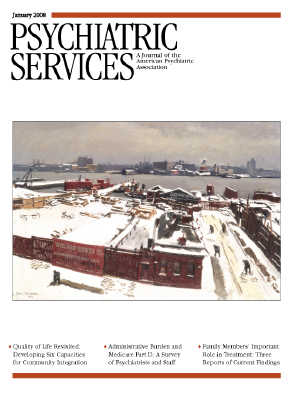ADHD Grown Up: A Guide to Adolescent and Adult ADHD
If, as you read this paragraph, your mind wanders to that magnificent dinner you had at the French Laundry or the Richard Serra retrospective that you missed at the Museum of Modern Art, this book may just be for you. In this well-researched and equally well-written tome on attention-deficit hyperactivity disorder (ADHD) among adolescents and adults, Joel Young has created not only a guide, as the title states, for the general public but also a really good reference text for child and adult psychiatrists and any clinician who may be working with this population.
I knew ADHD Grown Up was going to be a good text when this up-and-coming diagnosis, at least up-and-coming in the adult psychiatry scene, was compared head-to-head with the current diagnosis du jour of the child and adolescent psychiatry world, bipolar disorder. Young goes through a number of other diagnoses that get mixed up with ADHD, including anxiety and depressive disorders. The book starts with a very didactic first chapter, "Diagnostic Screening Process"; it lists a number of rating scales and checklists, some of which are available free on the Internet, that can help to lead clinicians to an appropriate diagnosis.
ADHD Grown Up feels like Young is leading a young resident or first-year child fellow by the hand through the various steps involved in making a good diagnosis. He even has some sample dialogues that can be very helpful in guiding the trainee. From my experience as a second-year child fellow, it did not feel pedantic or condescending, but rather I found myself making mental notes of what to look for with the adolescents and adults who may have ADHD. When treating a child for ADHD, one may need to ask a teacher to fill out a Conners scale or make a call to the after-school program director to gauge how the child is doing there. When treating an adolescent or adult without a diagnosis of ADHD, one may look for multiple traffic tickets, marital problems, procrastination, disorganization, and forgetfulness about projects and other important things, such as where he or she put the car keys. These latter few characteristics may combine synergistically into what might be referred to as laziness, just plain rudeness, or incompetence. And these problems have very real-world consequences, such as not getting pay raises or being fired, as Young describes for a number of his patients.
Another major problem Young addresses in several parts of the book is substance abuse. Amazingly, the risk to someone not treated for ADHD is a three- to fourfold risk of substance abuse, such that in one study, 18% of control-group adolescent boys used drugs, 25% of adolescent boys with treated ADHD used drugs, and a whopping 75% of adolescent boys with untreated ADHD used drugs.
Adolescent boys and girls with ADHD may be engaging in substance abuse, early and unprotected sex, and reckless driving, and they also may not be performing well in school. Young identifies those with purely inattentive-type ADHD as one of the groups that may not be identified as having a problem. These adolescents and adults may be seen as flighty and flaky or just "bubbly." Unfortunately, when these individuals are written off in this way, they never get the appropriate help and never realize their full potential. One full chapter is devoted to gender issues, specifically how young women with ADHD are different from young men with ADHD. The women often get overlooked because their symptoms do not typically present as the in-your-face attitude of a boy with ADHD, something that looks more akin to oppositional-defiant behaviors. Young women tend to be more introverted, shy, and distractible and may even be treated for depression or anxiety, although the overriding problem is in fact ADHD.
Young reviews the treatment modalities, including medication and therapies, in the final few chapters of the book. Treatment often evokes the common problem of prescribing a stimulant medication to a former drug abuser. The goal is to treat the problem without causing other problems. If the clinician does not want to take the risk, there are always nonstimulant medications for this patient population, such as atomoxetine and modafinil, neither of which has any abuse potential.
With this book in hand, psychiatrists, nonpsychiatric physicians, and the lay public all get a very good view of ADHD in the adolescent and adult populations, the real face of this problem, and the pitfalls of not treating it, as well as the pitfalls faced during its treatment.



